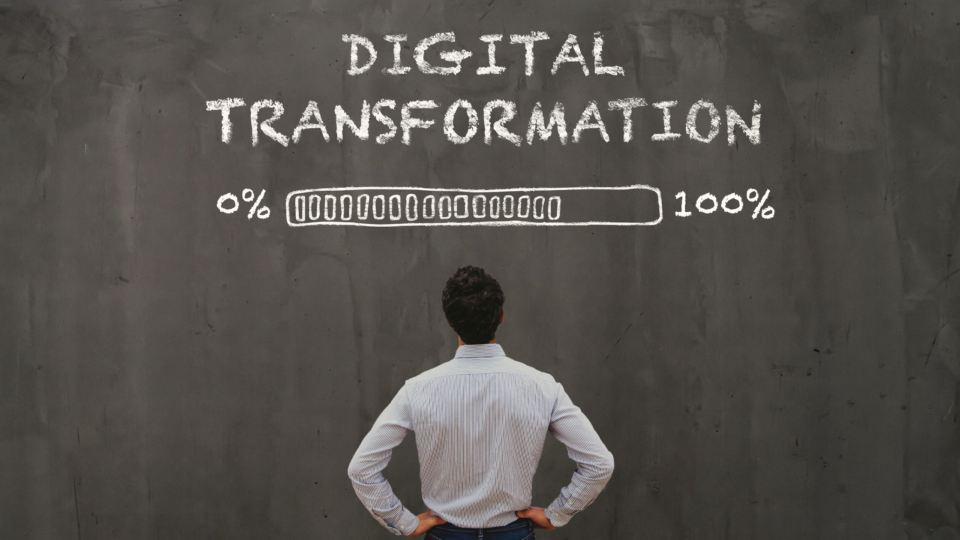
Most likely – let’s take a look…
In talks with our prospects and customers there is a lot of chatter these days related to “digital transformation” and whether or it is important to have a plan and roadmap related to digital transformation in the business. These are good and relevant questions for sure. However, before we jump into whether “to plan or not to plan” let’s take a minute and look at what digital transformation is all about for distribution companies.
In many instances, including for many companies in the distribution industry, the beginning of digital transformation is as simple as migrating paper or manual processes to software or technology. Per Wikipedia, the definition of digital transformation (often times abbreviated “DX”) is defined as “the adoption of digital technology by a company. Common goals for its implementation are to improve efficiency, value or innovation.” That is a pretty broad definition and the different technologies can generally be broken down into 4 rough categories.
- Engineering Technology: The technology you are using to design and engineer products that you make and manufacture.
- Manufacturing Technology: The technology you are using to facilitate the manufacturing of your products.
- Back Office Technology: This generally includes ERP, accounting, HR and other “back office” technologies that are needed to run the business.
- Customer Experience (CX) Technology: This refers to any technology you are using to procure sales leads, turn sales leads into customers, make online sales and manage the overall customer journey and experience (both with internal staff and 3rd party sales partners). CRM, Marketing and Sales Automation, Channel Management and e-Commerce technologies all fit into this category.
We generally find that many manufacturing companies have really strong and thorough DX plans for the implementation and adoption of Engineering Technology and Manufacturing Technology. We also find that most manufacturing and distribution companies have done a good job of implementing and adopting Back Office Technology.
However, as it relates to Customer Experience Technologies we find that many manufacturing and distribution companies are lacking a strategic plan or roadmap for CX Technology and/or are putting much less attention and importance on it than the other Digital Transformation categories.
So what should be included in your Plan for Customer Experience Technology?
The essential sections of your Customer Experience DX Plan should include:
- Customer Data: As a manufacturer or distribution company you likely generate and have access to a tremendous amount of valuable prospect and customer information including purchase histories and behaviors. This data is considered “1st party data” and needs to be looked at as the heart and soul of your CX strategy. Capturing and organizing this data will enable future use of AI and other advanced technologies. Also, now more than ever, it is important that you keep this data secure and controlled as more and more privacy legislation arises.
- CRM Platform: This should be the foundation for your Plan for Customer Experience Technology. A CRM Platform should be able to aggregate customer-centric data from multiple sources (such as ERP, Marketing Automation, e-Commerce, etc.) and act as a hub for all lead and customer related activity and 1st party data. It should also enable access and collaboration with your 3rd party channel partners and provide visual insights, tools and automations that help enable sales teams to increase sales and customer lifetime value versus just being a place to record activity. Your CRM platform should also support a modular, “lego like” implementation so that you implement and deploy functionality incrementally as it is needed.
- Marketing Automation: This is a broad subcategory and includes any technology related to email marketing, SMS or text communications, managing social media or even managing digital ad campaigns.
- E-Commerce/Online Sales: Again, this a a broad category and includes any shopping or purchase experience that is available online.
There are other technologies that could be included in your CX Plan but the above items are the most essential and relevant components to make sure are included in your Plan.
This makes sense, now what?
Our primary mission at LeadSmart is to help our clients select and implement the right Customer Experience technologies that drive sales growth and improve the overall customer and partner experience. We would be happy to discuss and review your Customer Experience DX Plan with you and provide objective feedback or even help you create your Plan if you are just getting started.
If you do not currently have a CRM product or are already using Salesforce please contact us ASAP. Then we can work with you on a plan and roadmap for how your sales and marketing teams can begin to access and successfully utilize this data and take full advantage of LeadSmart’s CRM capabilities. However, you will want to start logging, organizing and tracking your 1st party data ASAP so this is where we will want to start.
